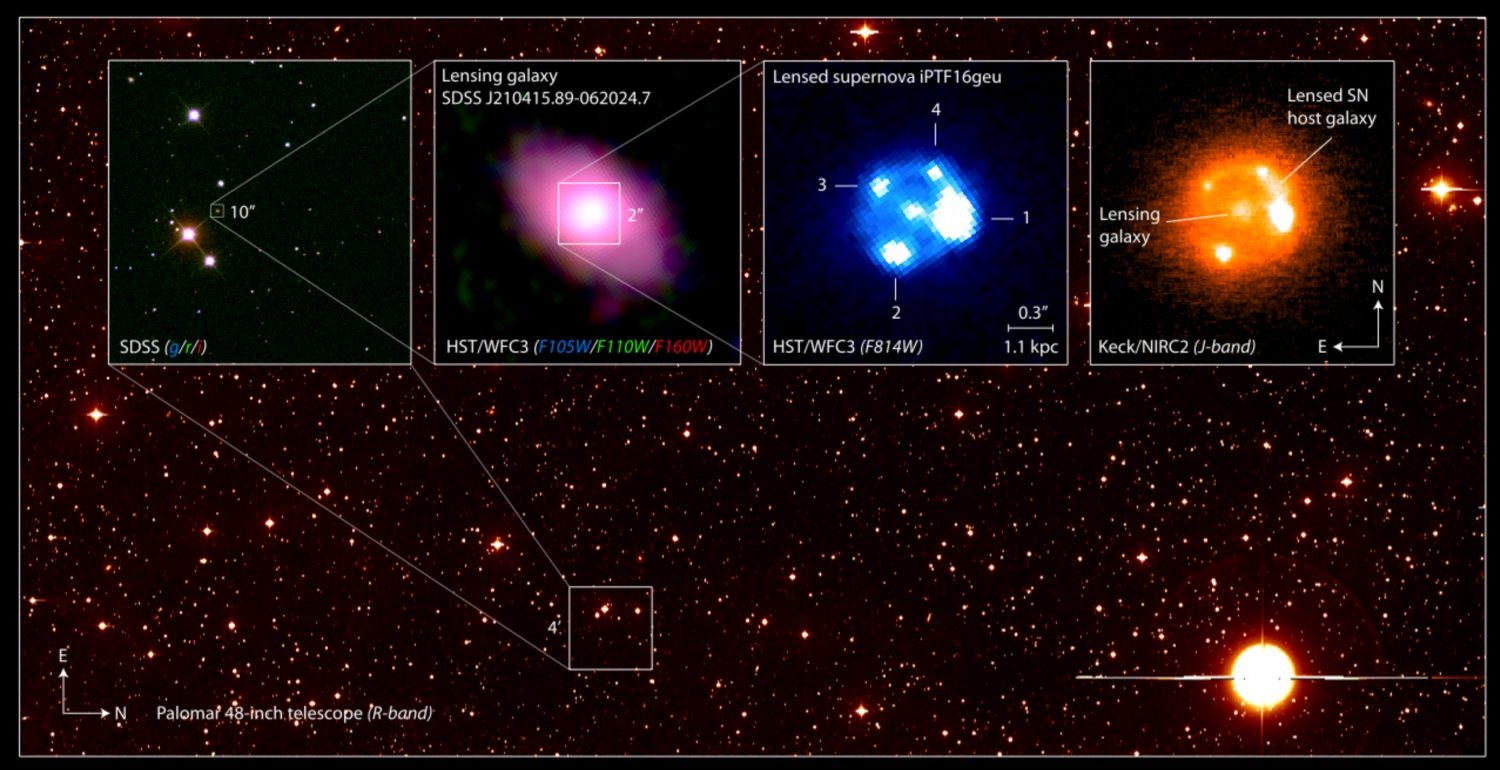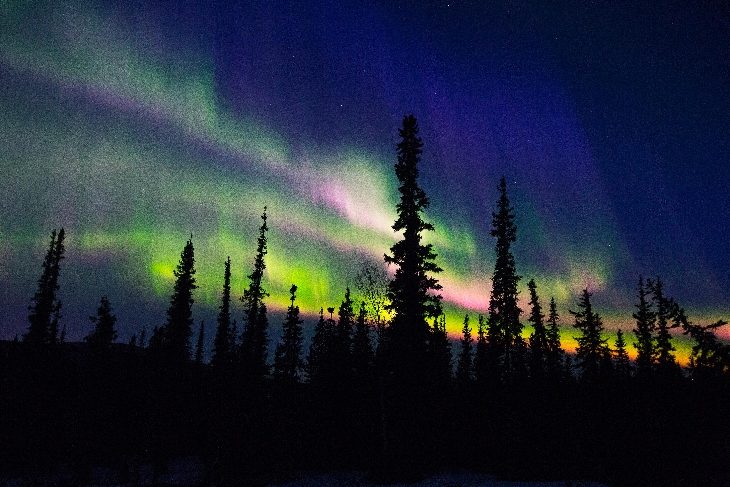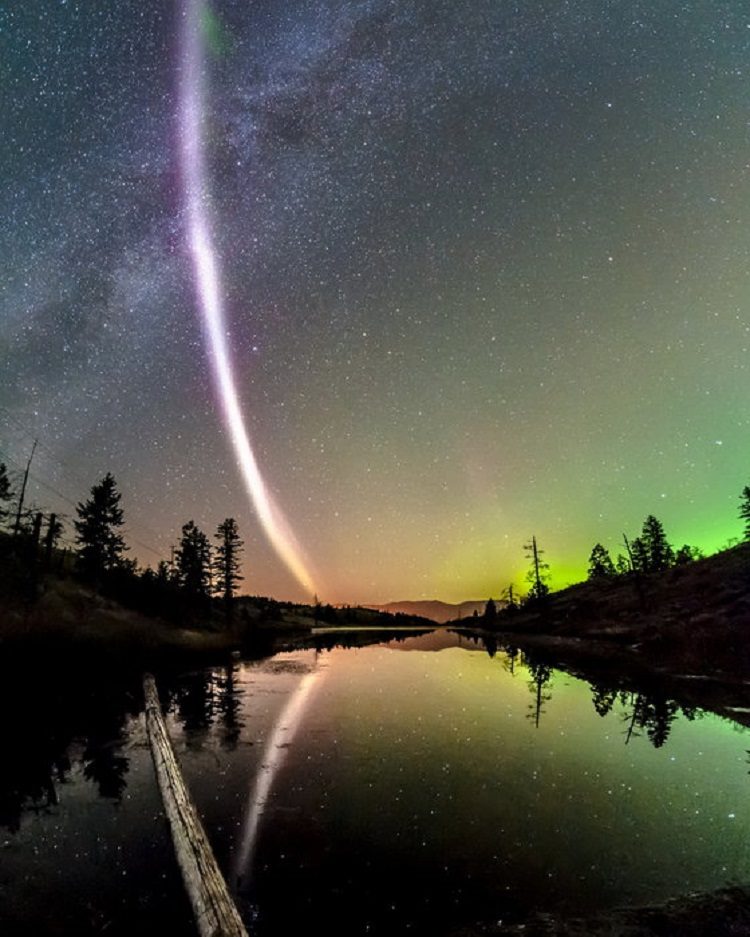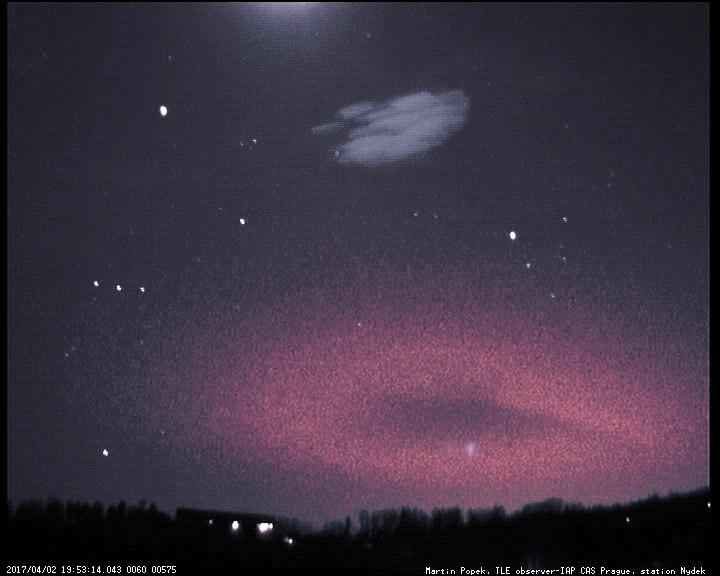
© Joel Johansson, Stockholm UniversityThis composite image shows the gravitationally lensed type Ia supernova iPTF16geu, as seen with different telescopes. The background image shows a wide-field view of the night sky as seen with the Palomar Observatory located on Palomar Mountain, California. Far Left Image: Captured by the Sloan Digital Sky Survey, this optical light observation shows the lens galaxy and its surrounding environment in the sky. Center Left Image: Captured by the Hubble Space Telescope, this is a 20x zoom infrared image of the lens galaxy. Center Right Image: Captured by the Hubble Space Telescope, this 5x optical light zoom reveals the four gravitationally lensed images of iPTF16geu. Far Right Image: Captured by the Keck Telescope, this infrared observation features the four gravitationally lensed images of iPTF16geu and the gravitational "arc" of its host galaxy.
With the help of an automated supernova-hunting pipeline and a galaxy sitting 2 billion light years away from Earth that's acting as a "magnifying glass,'' astronomers have captured multiple images of a Type Ia supernova—the brilliant explosion of a star appearing in four different locations on the sky.
So far this is the only Type Ia discovered that has exhibited this effect.This phenomenon called 'gravitational lensing' is an effect of Einstein's Theory of Relativity—mass bends light. This means that the gravitational field of a massive object like a galaxy can bend light rays that pass nearby and refocus them somewhere else, causing background objects to appear brighter and sometimes in multiple locations. Astrophysicists believe that if they can find more of these magnified Type Ia's, they may be able to measure the rate of the Universe's expansion to unprecedented accuracy and shed some light on the distribution of matter in the cosmos.
Fortunately, by taking a closer look at the properties of this rare event, two Lawrence Berkeley National Laboratory (Berkeley Lab) researchers have come up with a method a pipeline for identifying more of these so-called "strongly lensed Type Ia supernovae" in existing and future wide-field surveys. A paper describing their approach was recently published in the
Astrophysical Journal Letters. Meanwhile, a paper detailing the discovery and observations of the 4 billion year old Type Ia supernova, iPTF16geu, was published in
Science on April 21.
"It is extremely difficult to find a gravitationally lensed supernova, let alone a lensed Type Ia. Statistically, we suspect that there may be approximately one of these in every 50,000 supernovae that we identify," says Peter Nugent, an astrophysicist in Berkeley Lab's Computational Research Division (CRD) and an author on both papers. "But since the discovery of iPTF16geu, we now have some thoughts on how to improve our pipeline to identify more of these events."





Comment: Another ELVE was photographed above a thunderstorm in Colorado last year. A few days ago 6 'gigantic jets' (ionospheric lightning) were captured above storm clouds in Western Australia. Another blue jet was observed over Brazil last month. These transient luminous events (TLEs) are not so 'rare' these days.
See also: Electric universe: Lightning strength and frequency increasing
The Electric Universe model is clearly explained, with a lot more relevant information, in the book Earth Changes and the Human Cosmic Connection by Pierre Lescaudron and Laura Knight-Jadczyk.